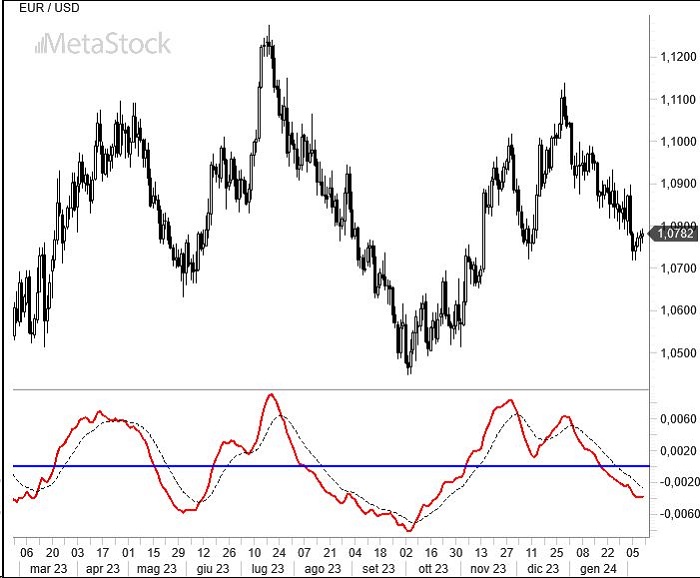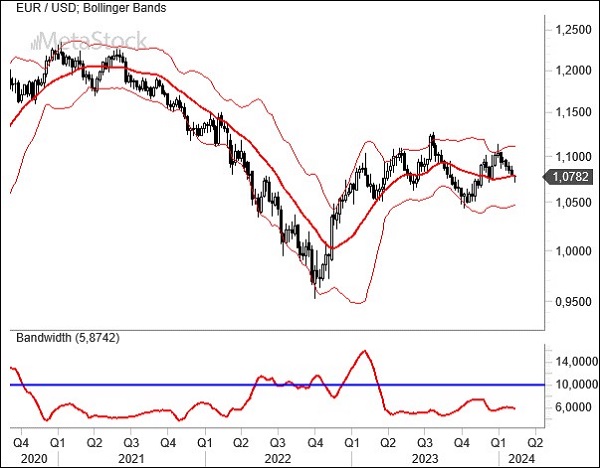- Powell’s cautious stance on rates aligns with a thriving US economy, which contrasts with an accommodating monetary policy. The market is now pricing in fewer cuts to the cost of money for 2024.
- Germany appears to struggle to emerge from an economic limbo, positioning it as Europe’s laggard. However, the ECB remains cautious about next moves regarding rates due to a weakening euro, which could deteriorate further if easing begins sooner than expected.
- EurUsd once again tests the 1.08 support level, dipping below but not breaking through. The battle is tough but not yet over.
A Mixed Markets Outlook
In a media interview, Powell took a cautious stance. We are convinced that the path back to 2% is underway, declared the Federal Reserve Chairman, but it’s better to be prudent given the recent and very positive results from the job market. Translating this into practical terms, even the rate cut expected in May seems to be dissipating, with the market currently pricing in a 125 basis point reduction in the cost of money for the entirety of 2024. If upcoming data are positive, the sentiment is that the market might not take it well, while the dollar will continue its rally, moving away from the technical support threshold of 1.08. And the ISM services index, reaching its highest point since September, seems to point towards the necessary caution before easing restrictive monetary policies. Some disruption could come from the health of American commercial banks, particularly shaken by the difficulties in the non-residential real estate sector. However, Secretary of State Yellen has shown confidence in the evolution of this phenomenon, which should not have significant impacts on credit issuance. Meanwhile, evidence of a European economic slowdown, especially in Germany, continues. In December, Berlin’s exports fell by 4.8%, but imports fared worse, down by 6.7%. Orders to companies rebounded by 8.9% in December. However, retail sales across the Eurozone slid by 1.1%, with Spain and again Germany lagging behind. Finally, industrial production also performed poorly, down by 1.6%, worse than Spain’s already negative production. The market is lukewarm on a rate cut at the next meeting on April 11.
Technical Analysis – EurUsd’s Bearish Trends and the Critical 1.08 Threshold
The MACD is a typical oscillator that measures trend evolution through moving averages. Slow to provide signals, but reliable when these signals occur. In the case of EurUsd, a drop below the zero line confirms a bearish trend that will only exhaust itself when the signal line (red) crosses from below upwards through the MACD. The feeling remains that EurUsd will continue to work on supports but will struggle to break through. A weekly close significantly below 1.08 would confirm that a return to 1.05 is within the realm of possibility for the exchange rate.

The chart representing EurUsd through Bollinger Bands has been increasingly featured in these pages, and we understand why from its analysis. Since the start of 2023, the range of the exchange rate value has been well delimited by upper and lower bands. Currently, the exchange tests the solidity of the middle line, which is nothing but a 20-week exponential moving average. A natural move from the top to the bottom of the range would occur with a definitive break below 1.08, projecting the exchange rate to 1.05 without interrupting the ongoing lateral movement. This is an opportunity for traders who, with a weekly close below 1.08, could speculate on a short position (with a stop at 1.085) and a target of 1.05.



Leave a Reply
You must be logged in to post a comment.